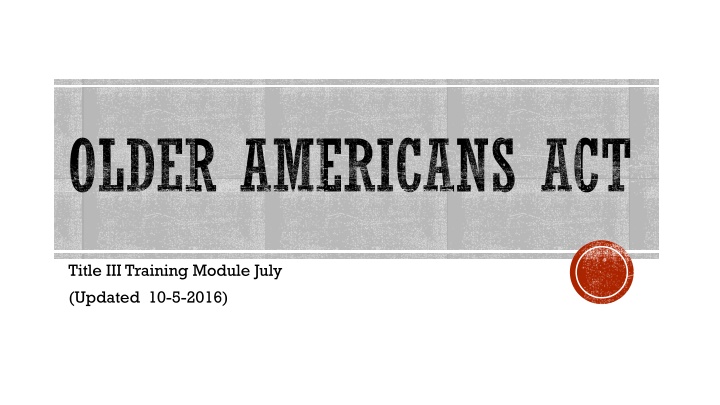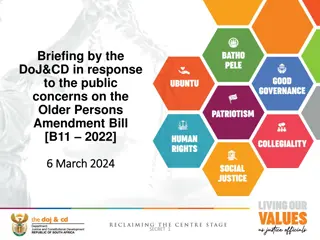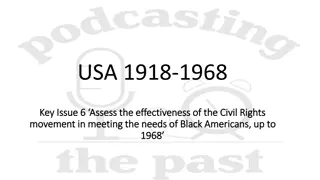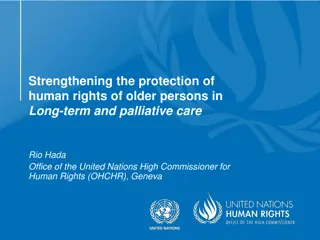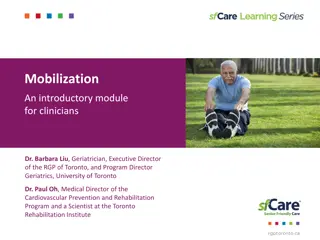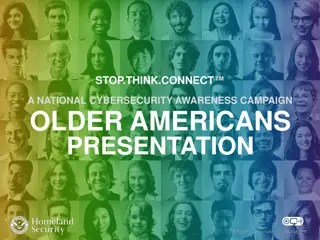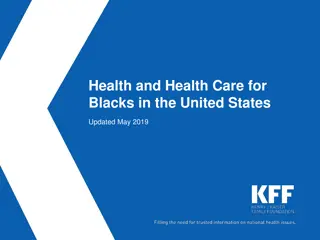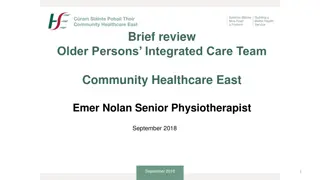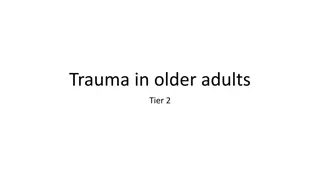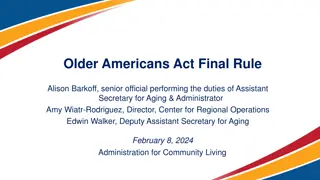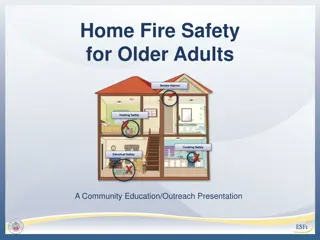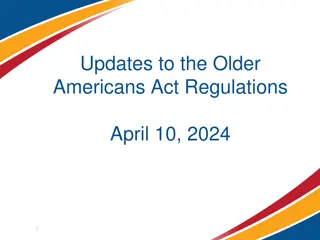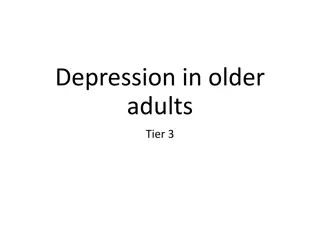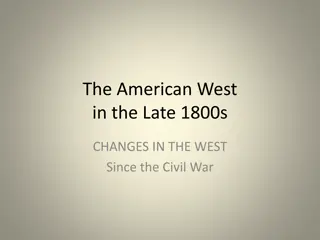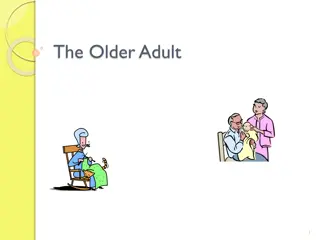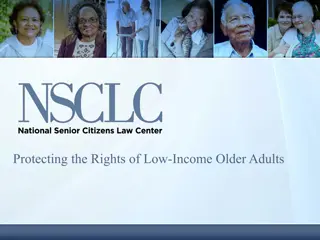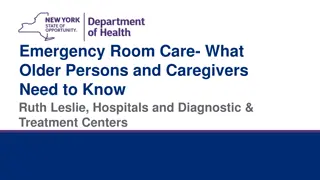OLDER AMERICANS ACT
The Older Americans Act, passed in 1965, plays a pivotal role in providing social and nutrition services to seniors. Explore its structure, impact on the growing older population, support in the workforce, and focus on daily living needs. Learn how interagency cooperation enhances service delivery for older Americans.
Download Presentation

Please find below an Image/Link to download the presentation.
The content on the website is provided AS IS for your information and personal use only. It may not be sold, licensed, or shared on other websites without obtaining consent from the author.If you encounter any issues during the download, it is possible that the publisher has removed the file from their server.
You are allowed to download the files provided on this website for personal or commercial use, subject to the condition that they are used lawfully. All files are the property of their respective owners.
The content on the website is provided AS IS for your information and personal use only. It may not be sold, licensed, or shared on other websites without obtaining consent from the author.
E N D
Presentation Transcript
OLDER AMERICANS ACT Title III Training Module July (Updated 10-5-2016)
BEGINNING YEARS Congress passed the Older Americans Act (OAA) in 1965 in response to concern by policymakers about a lack of community social services for older persons. The original legislation established authority for grants to States for community planning and social services, research and development projects, and personnel training in the field of aging. The law also established the Administration on Aging (AoA) to administer the newly created grant programs and to serve as the Federal focal point on matters concerning older persons (ACL.gov).
INTERAGENCY COOPERATION Although older individuals may receive services under many other Federal programs, today the OAA is considered to be the major vehicle for the organization and delivery of social and nutrition services to this group and their caregivers. It authorizes a wide array of service programs through a national network of 56 State agencies on aging, 629 area agencies on aging, nearly 20,000 service providers, 244 Tribal organizations, and 2 Native Hawaiian organizations representing 400 Tribes (ACL.gov).
OLDER AMERICAN FACTS The population of older Americans is growing at a high rate. Older Americans have new and exciting opportunities in the workforce. Seniors at times need help and assistance with ADL s. The older Americans Act provides legislation to provide programs and resources for the individuals, the care givers, the program employees, and provides social and health education to the public. This network is far reaching and interagency cooperation and referral is necessary.
PROGRAMS TO HELP FROM OAA/ OKLAHOMA Aging Services Programs Information Organization Mission Statement The Aging Services Division (ASD) helps develop systems that support independence and help protect the quality of life for older persons as well as promotes citizen involvement in planning and delivering services. Services Page Content1 Adult Day Services ADvantage Services Legal Assistance
Long-Term Care Ombudsman Oklahoma Senior Corps Program Oklahoma State Council on Aging Older Americans Act (Title III) Pharmacy Connection Council Senior Community Services Employment Program Senior Farmers Market Nutrition Program (SFMNP) State Plan Personal Care Transportation Online Services ADvantage Program Information Bulletins ADvantage & Medicaid State Plan Personal Care Provider Report Cards Community Services Worker Registry
Resources: http://www.aoa.gov/AoA_programs/OAA/index.aspx http://aoa.gov/AoA_Programs/OAA/Reauthorization/Index.aspx http://www.dol.gov/ http://longtermcarelink.net http://www.okdhs.org/ (click services, then aging for more information)
